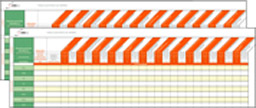Planning Out Your Product Launch —
The 3 Keys to Your Success
In the launching of a product so many variables can emerge, the challenge can seem overwhelming. Use these 3 points to keep it real, moving forward and aimed at success:
- 1. Don’t fall too head-over-heels in love with the idea
- 2. Accurately define your target market
- 3. Validate your progress to justify your commitment
With good guidance and teamwork your vision can translate more easily into success.
FREE PRODUCT LAUNCH PLANNER

To download at no cost, fill out this form.
1. Don’t Fall Too Head-over-heels in Love
with the Idea
PROBLEM:
The Dream: This idea will bring untold success.
The Reality: Subjectivity is like a blindfold that stops you from identifying things that could limit your success.
SOLUTION:
First get proof of concept through a test market. Work either with a small group that you have access to, or hire in a team to manage this for you. Your test market must be realistic. Learn from the results and apply them to your idea. If you aren’t prepared to learn and adapt from this experience, it is a warning sign that you are too close to your product.

2. Accurately Define your Target Market
The Dream: Your idea offers so many benefits it will practically sell itself once it’s publicized.
The Reality: Your idea is also a grain of sand on a beach of opportunities that your target audience visits on a daily basis.
Solution: Pinpoint your target market before you develop your product idea fully. Accurate definition will help you understand the needs, opportunities and barriers to entry for that market. First look through the eyes of the customer and then study all the competitive factors.
A. Target Market Definition: The Customer Perspective
- Identify your audience by geographic, demographic and psychographic attributes (a.k.a. location, situation and values). At the same time, identify the media opportunities that reach that audience.
- Understand how those customers currently solve the problem that your product relates to, and list all the pain-points associated with their solution.
- Establish the convenience, cost-benefit and improvements customers can gain by switching to your product and focus on these.


B. Target Market Definition: The Competition
Aside from direct competitors, consider who else might be chasing the same consumer dollars. Even consumer apathy is competition so look into everything. Your strategy will depend on where you idea fits into the current market:
- Competitive – you are the latest entry to an existing market. Success will depend on the value of your convenience, cost-benefit and improvement differentiators.
- Leading Edge – your product is a step ahead of what is out there. You need to be aggressive before your competition catch up.
- Disruptive – your product re-defines the category. This is a much bigger hurdle, but you can take ownership of this entire category. Your competition will be slower off the mark until they see your success.
- Virgin – there is no current market for your invention. This represents the greatest risk, but also the greatest potential, if you can convince the customer of their need for your product. This can take time, but you won’t have direct competition until after the product catches on.
3. Validate your Progress to Justify your Commitment
The Dream: This product will go viral because of your YouTube demonstration video.
The Reality: You could as easily win the Lottery.
Solution: Every step along the way to launching your product is an opportunity to monitor and measure feedback. It is hard to predict all the time, effort and resources needed for a product launch. But if you validate your progress at each stage, you will strengthen your conviction, and improve your chances of achieving your goals.
Fund your launch this way:
1) Set aside seed money to get you through the prototype stage and then move to a 2nd round of investment based on the performance of your prototype.
2) Do your pre-launch testing, gauge the results and plan your next level of investment.
3) Do the same with a pilot launch and then plan your total budget for the big launch.
This prudent approach reduces speculation and focuses on ‘realistic return on investment’, so you can pursue your goals, maintain your commitment and see a successful outcome to your product launch.
